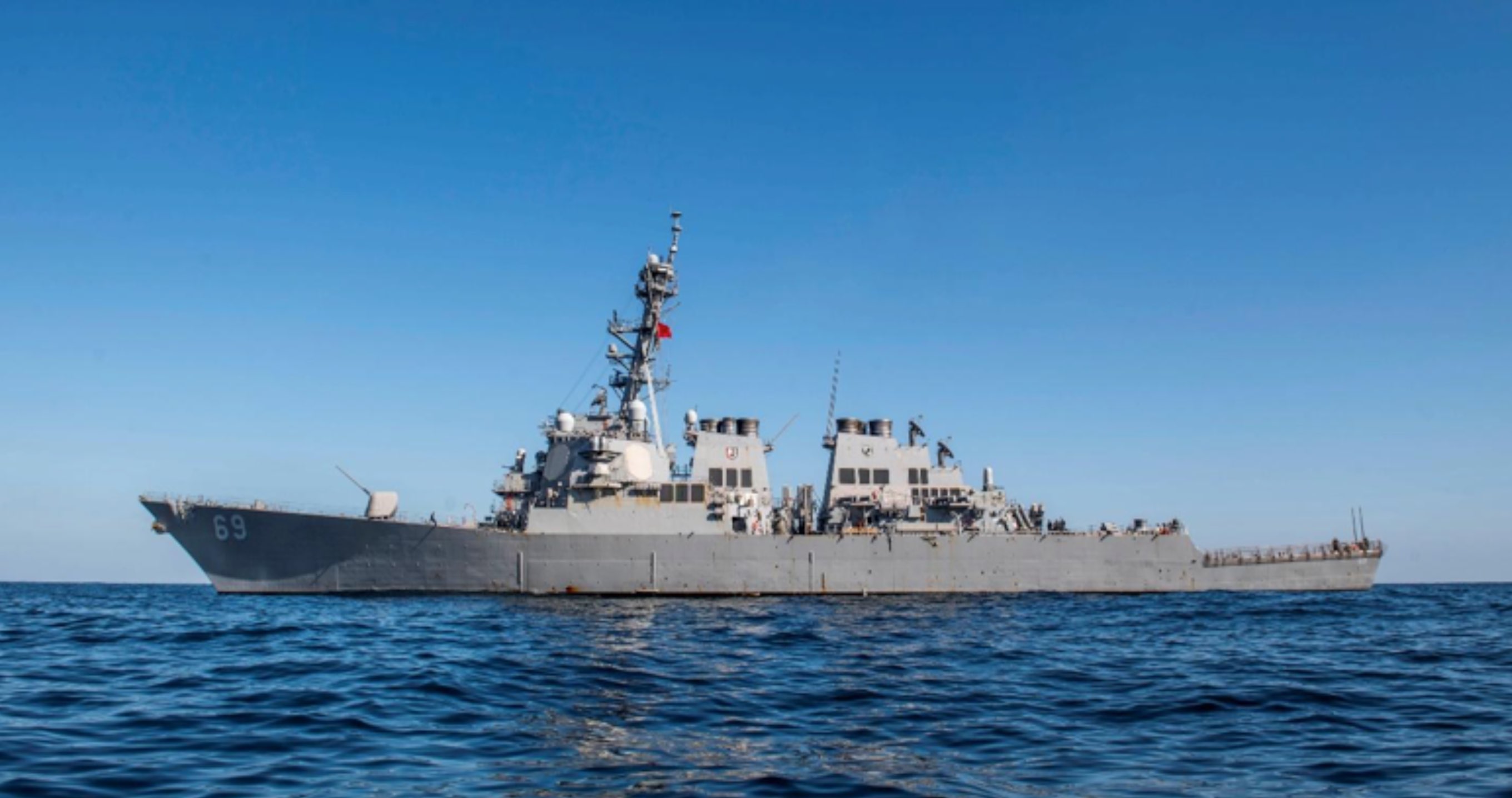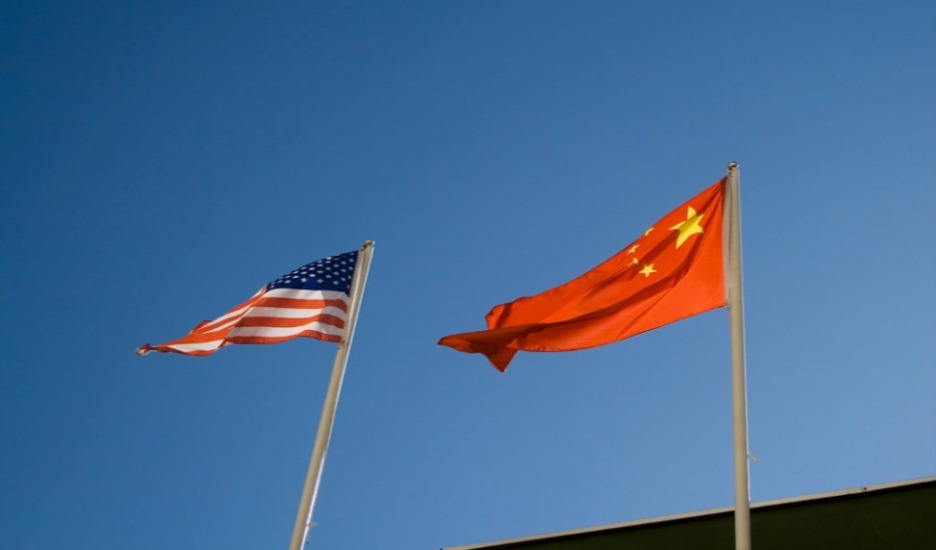Water Wars: Breezy Days in Bangkok
After a summer of dramatic standoffs in the South China Sea, the past month has seen a return to diplomacy and negotiation in Southeast Asian relations.

Published by The Lawfare Institute
in Cooperation With

The twice-annual meeting of the Association of Southeast Asian Nations (ASEAN) was held in Bangkok, Thailand, in the first week of November. Representatives of the 10 member nations were in attendance to discuss regional policy and inaugurate Vietnam as the chair for 2020, but most of the week’s drama came from observer nations. For example, Chinese Premier Li Keqiang delivered an opening statement on Nov. 3 calling for “new progress” on a code of conduct for South China Sea interactions and reiterating China’s commitment to “long term peace” in the South China Sea. The following day, U.S. National Security Adviser Robert O’Brien accused China of bullying ASEAN members out of their offshore resources; Li responded with an oblique reference to “nonregional countries” trying to “impose their will.” O’Brien’s attendance was itself a point of friction, as the U.S. has customarily sent either the president or the vice president to ASEAN. Only Vietnam, Thailand and Laos chose to attend the Nov. 4 meeting with O’Brien, the worst turnout to a U.S.-ASEAN summit since 2011. Some regional analysts went so far as to characterize the U.S. executive’s choice to devote energy to the Louisiana and Kentucky gubernatorial elections at the expense of ASEAN attendance as “truancy.”
In Other News
A bombshell report leaked from the Philippine parliament claims that the Chinese government has effective control over the Philippines’s power grid and could shut it off at will. The paper claims that China’s State Grid Corporation has a 40 percent stake in the National Grid Corporation of the Philippines and that certain crucial systems are under exclusive control of Chinese engineers. It goes on to conclude that “our national security is completely compromised.”
A Chinese state-owned corporation has secretly leased all development rights to a major portion of the Solomon Islands. The agreement, signed on Sept. 22 between the provincial government of Tulagi and the China Sam Enterprise Group, grants open-ended development rights to Tulagi and its surrounding islands. The local population was not aware of the deal’s existence, and many are worried that the endgame is a Chinese military installation. These fears are fueled by the fact that on Sept. 16, a week before the signing, the Solomon Islands officially broke diplomatic relations with Taiwan and allied itself with Beijing.
Media portrayals of China’s “nine-dash line” territorial claims in the South China Sea have caused consternation in neighboring countries. On Oct. 14, Vietnam pulled the DreamWorks film “Abominable” from its theaters in protest of a scene that depicts a map of the nine-dash line. Two days later, on Oct. 16, Philippine Foreign Affairs Secretary Teodoro Locsin called for the scene to be removed from the film, as well as for Filipinos to boycott DreamWorks in response. On Oct. 23, the South China Morning Post reported that Vietnam has also cracked down on importers of Chinese cars for navigation apps that depict the line, ordering that the apps be removed from the vehicles before sale.
On Oct. 17, Malaysian Foreign Minister Saifuddin Abdullah delivered a parliamentary address calling for upgrades to Malaysia’s navy in preparation for possible conflicts. Abdullah’s speech foreshadows the December release of Malaysia’s first major analysis of its military capacity as well as a 10-year plan for future development. Abdullah noted that conflict was to be avoided if possible but argued that, in the event of a clash between larger powers, Malaysia will need the ability to police its own waters.
After four months of tense standoffs, Chinese survey vessel Haiyang Dizhi 8 has completed its work and departed Vietnam-claimed waters as of Oct. 25. Haiyang Dizhi 8 had been conducting oil and gas surveys near contested Vanguard Reef since July and was often joined by armed Chinese escorts. Vietnam registered severe displeasure over the vessel’s conduct, but reports suggest that the departure is due to the completion of its mission, not to any recognition of Vietnam’s claims to the waters in question.
On Nov. 5, the Chinese Academy of Sciences announced that a new submersible drone designed for long-range patrol of the South China Sea had completed a 37-day, 1,250-mile test run. Named the Sea-Whale 2000, the drone is equipped with a wide array of sensors and is reported to have a maximum dive depth of 2,000 meters. According to the press release, onboard artificial intelligence technology will allow the drone to conduct unmanned patrol and reconnaissance operations for weeks at a time.
On Nov. 18, the Chinese navy announced that its new (still unnamed) aircraft carrier had transited the Taiwan Strait and was en route to the South China Sea for further open-water testing. The vessel is expected to enter full service next year after it receives its full loadout of arms and materiel.
The U.S. 7th Fleet had a busy month for joint operations. On Oct. 21, the fleet concluded Maritime Training Activity Sama Sama 2019, a weeklong joint exercise conducted with the Philippine Navy and the Japan Maritime Self-Defense Force (JMSDF). On Oct. 31, the 7th Fleet concluded the Brunei portion of the 25th annual Cooperation Afloat Readiness and Training (CARAT) exercise. CARAT, conducted in partnership with several South Asian militaries, is the U.S. Navy’s longest-running joint exercise in the region. From Oct. 24 to Nov. 2, the 7th Fleet’s Ronald Reagan Strike Group joined JMSDF Escort Division 12 to perform tactical battle exercises and maneuvers. On Nov. 4, the 7th Fleet and the Bangladesh Navy inaugurated the next section of CARAT 2019 at the School of Maritime Warfare and Tactics in Chattogram. On Nov. 10, the 7th Fleet’s Destroyer Squadron (DESRON) 15 joined the JMSDF, the Royal Australian Navy and the Royal Canadian Navy for the start of ANNUALEX ’19. This year’s ANNUALEX will involve approximately 9,000 U.S. personnel across cooperative air, surface and subsurface training modules. On Nov.11, U.S. naval forces partnered with Australian, Canadian, U.K. and New Zealand units for the 19th iteration of Exercise Dugong, a mine countermeasure and harbor clearance program held off the coast of Perth, Western Australia.
On Nov. 20 and 21, the 7th Fleet conducted back-to-back Freedom of Navigation Operations (FONOPs) in the South China Sea. The first was performed on Nov. 20 by guided missile destroyer USS Wayne E. Meyer near the Paracel Islands. The following day, littoral combat ship USS Gabrielle Giffords conducted a close pass of Mischief Reef in the Spratly Islands. On Nov. 22, Chinese officials confirmed the FONOPs and “urge[d]” the U.S. to respect China’s “indisputable sovereignty” over the waterways.
Analysis
In the Wall Street Journal, Gordon Lubold argues that the Pentagon’s claimed intent to prioritize Asia-Pacific strategy is in tension with budgeting practice. Despite adoption of the new National Defense Strategy in 2018, which called for a reorientation toward countering Chinese expansion, U.S. Indo-Pacific Command looks much the same as it has since World War II. At the same time, Eastern European and Middle Eastern operations are receiving increased resource allocations.
Richard Heydarian writes in the South China Morning Post that the increasingly assertive stance taken by the Trump Pentagon toward the South China Sea may be escalating the tensions to the level of a new Cold War. Heydarian notes multiple operational shifts in U.S. naval policy that, he suggests, will increase the chance of skirmishes with Chinese vessels in the future.
At the Center for Strategic and International Studies, Nicholas Szechenyi breaks down the decisions that led to the recent deterioration of the bilateral relationship between South Korea and Japan. Szechenyi notes that these tensions are due to a combination of cultural and geopolitical factors and warns that the U.S. may face increased difficulty in regional security cooperation as a result. The breakdown of U.S. defense talks with South Korea in Seoul last week is a bleak confirmation of Szechenyi’s forecast.
At the Asia Maritime Transparency Initiative, Pham Ngoc Minh Trang offers a forecast of how Vietnam’s chairship of ASEAN will affect the group’s priorities in 2020. She argues that Vietnam will likely attempt to keep the South China Sea conflict at the forefront of business but notes that there will be pushback from other members that do not see ASEAN’s role as an international adjudicator.


.jpg?sfvrsn=5a43131e_9)


